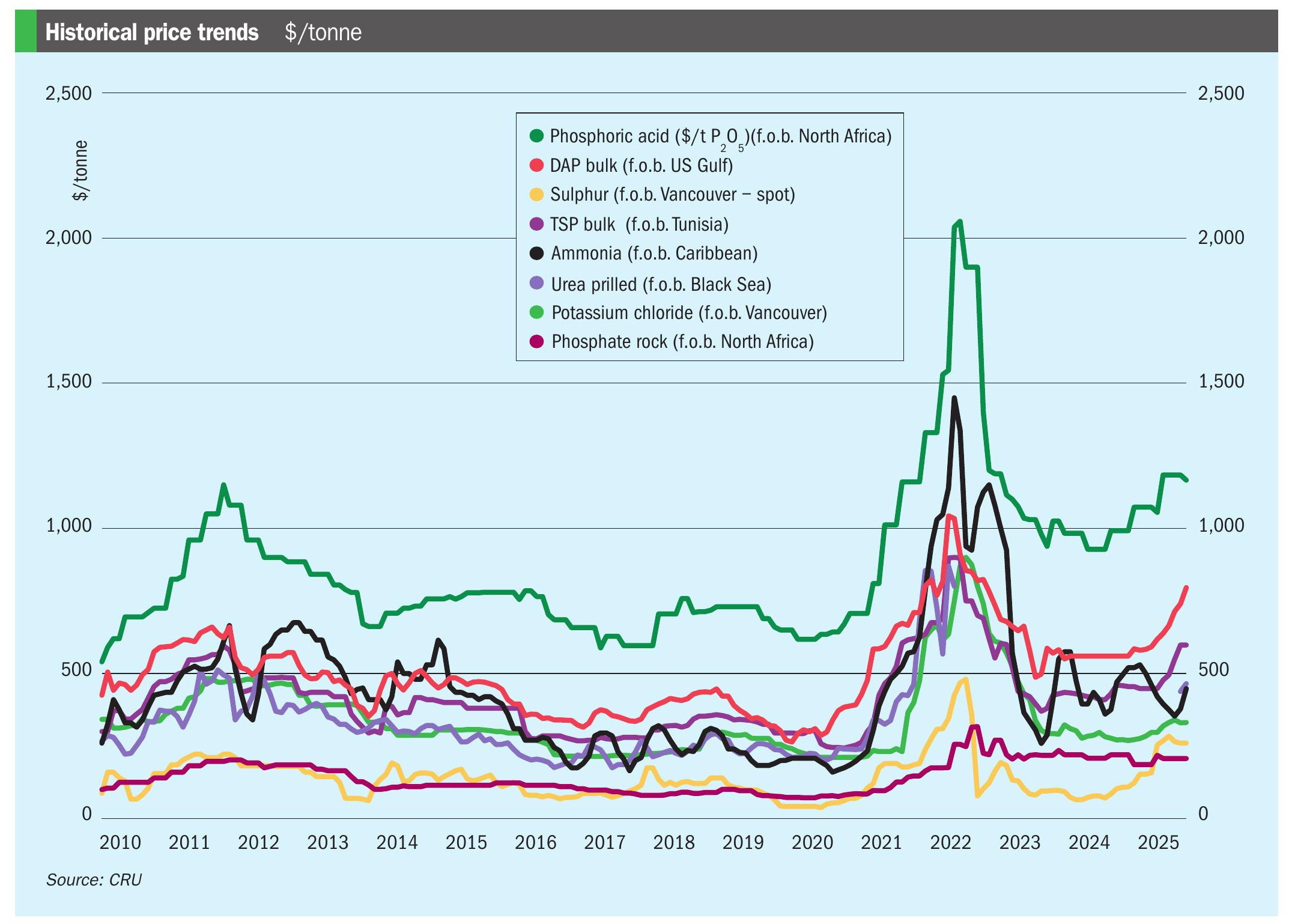Nitrogen+Syngas 365 May-Jun 2020

31 May 2020
Market Outlook
Market Outlook

AMMONIA
- The impact of coronavirus on both supply and demand continues to provide considerable uncertainty to the market. Industrial demand seems to have been worst affected, and fertilizer related demand has largely kept up, although shutdowns in India’s ammonium phosphate sector have also affected demand. Spring is traditionally the strongest time for fertilizer demand, and this has helped support prices at least in the short term.
- However, the market was oversupplied before the Covid-19 pandemic, and falling demand has only exacerbated the situation. Fortunately feedstock, especially natural gas prices have been falling in tandem with ammonia, which eases some of the burden on producers.
- At the moment prices are holding steady at their new lower levels, and what happens next depends very much upon how and when the lockdown eases in major producing and consuming countries.
UREA
- Market uncertainty and peak demand for the spring application season led to a run-up in urea prices during February and March, boosted by a 750,000 tonne tender from India. However, with this past and demand from India more subdued than expected, urea prices have been falling from mid-March into April and remain relatively soft. Black Sea and Baltic rates dropped to $200/t f.o.b., with Arab Gulf prices about $220/t f.o.b.
- More demand is expected from India, with MMTC due to close a tender in May, and there are expectations Brazil will come back to the market by June, but there is still plenty of supply available.
- In spite of some shutdowns, availability continues to increase from new facilities. Egyptian Chemical Industries (KIMA) has announced that its new fertiliser facility in Aswan is now fully operational, with a capacity of 1,200 t/d of urea and 300 t/d of AN. Dangote Fertilizer’s 3 million t/a urea complex at Lekki, near Lagos in Nigeria, is close to being commissioned with its various sections being test run, according to the company.
- On the other hand, many producers are expected to take plant turnarounds if prices remain low, which could see slightly tighter availability towards the end of the second quarter.
METHANOL
- Methanol prices peaked in mid-March, and then saw a precipitate fall. European methanol prices crashed at the end of March, falling as low as e150-158/ tonne for spot cargoes f.o.b. Rotterdam before rebounding slightly, as lockdowns across the continent affected shipments and industrial production.
- Fuel uses, direct blending and DME and MTBE have all also been curtailed, and no pickup in demand is likely in the short to medium term.
- Falling methanol prices did mean that methanol to olefin demand remained relatively strong in China, however, which has helped absorb some of the methanol flowing out of Iran which is no longer able to find Indian buyers.






